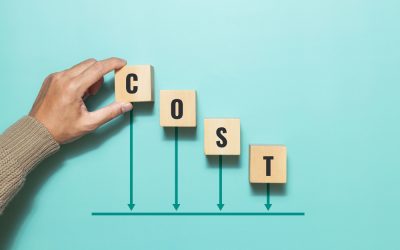 If you are considering self-distribution in your craft brewery business, the first question to ask is whether you can produce enough gross profit to cover all the costs of distribution.
If you are considering self-distribution in your craft brewery business, the first question to ask is whether you can produce enough gross profit to cover all the costs of distribution.
The fundamental equation: Distributor Gross Profit – Costs to Distribute = Profit or Loss on Self-Distribution.
To solve this equation, you’ll need to create a financial pro forma. This is a projection of your sales, gross profit and expenses for the self-distribution business.
The first step is to project anticipated sales. How many cases will you distribute? What is the average case price to retailer? What is the product mix you expect to sell? Create a detailed sales forecast by package. This will help inform your inventory needs. If you’re feeling frisky, build the forecast by retail account, by package. This will help inform your delivery route needs.
Next up is gross profit. The amount of distributor gross profit will vary depending on a number of factors: pricing of competitive products, product mix (package/draft), sales of other craft brands, etc. However, an average gross profit is about 25% of the sales price to retailer. So, for purposes of doing an initial calculation, take 25% of your projected distribution sales in your market and this will be the amount of gross profit dollars available to cover your distribution costs.
For instance, if projected sales from all self-distributed products are $500,000, you’ll have $125,000 to cover your distribution costs. If sales of $1million are projected, this will produce $250,000 in gross profit. This will be the total ‘new’ dollars you have to cover the costs of the distribution operation.
Distribution costs come in two broad flavors – fixed costs and variable costs. Fixed costs are the same whether you distribute one case or one thousand cases. Examples include the lease payments for delivery trucks, warehouse space or equipment. Variable costs are those expenses that will increase in relation to the increase in the volume that is distributed. Examples include fuel and maintenance for trucks, supplies and wages for hourly workers. The more you distribute, the more the variable costs increase.
Building up the cost structure of your self-distribution business can be a real mind-bender. There are the obvious costs that you need to account for – trucks, warehouse space, and people. Then there are the less obvious costs that can inflict pain on a new distributor – increases in worker’s comp premiums, out of code product that is now your responsibility to give credit for, and adding personnel to merchandise retail shelves.
Beer distributors use a term called critical mass to describe the minimum amount required to maintain the distribution venture. In other words, critical mass is the minimum volume or gross profit that you’ll need to break-even financially. Project your revenue, calculate gross profit, and build up the cost structure. Critical mass is your break-even point.
Key Metrics to Consider
As you build the pro forma, here are two key metrics to consider: Delivery Stops per Day and Profit Per Stop.
Delivery Stops per Day. I’ve found this to be a useful metric for personnel planning. Key questions: How many accounts do you need to service in a given week, what is the travel time between stops and how long does each stop take? Answer these questions and you can back into the number of trucks and drivers you will need.
For example, if you plan to deliver 100 accounts in a week, and the average drive time between accounts is 20 minutes and average service time at each account is 25 minutes, you’ll need about 80 hours per week of delivery labor. However, take into account that deliveries are not always spread out evenly throughout the week. You may have 40 accounts that want delivery on a Friday but only 10 on a Monday. This complicates the scheduling and staffing.
The numbers in this example can vary a great deal depending on the density of the account base, and level of service that will be provided. However, this process will help you plan for personnel and to build the delivery and sales routes.
Profit per stop. The financial pro forma will determine whether the operation as a whole can make money, and the profit per stop measurement will shed light on profitable vs. unprofitable deliveries. Until you get a good handle on your fixed and variable costs, this metric will be a best estimate. I’ve found it helpful to use a minimum required gross profit per stop as a starting point.
For instance, if the pro forma calls for $250,000 of gross profit annually, project this across the 100 accounts you will service. This works out to $2,500 of gross profit per account, or $50 of gross profit per stop, assuming weekly deliveries. The $50 gross profit works out to a sale price of $200 per stop ($200 x 25% gross profit percentage).
When I build a financial pro forma, these cost drivers are helpful. Make the best estimates you can, ask around for numbers if others are self-distributing, and build these metrics into your plan.
Don’t Forget These Guys…
Have you heard about The Law of Unintended Consequences? In the social sciences, unintended consequences (sometimes unanticipated consequences or unforeseen consequences) are outcomes that are not the ones foreseen and intended by a purposeful action. – Wikipedia
With self-distribution, the purposeful action is to distribute your own beer, and possibly beer from other craft breweries. Two unanticipated consequences to be mindful of: collection of accounts receivable, and management of product inventory. Each of these can have a big impact on cash flow.
Collecting Accounts Receivable. Instead of trying to collect from one distributor, you may need to collect from 60, 80 or 100 different retail accounts. In general, most people pay on time, but a percentage simply do not. You’ll need to have systems to follow up (or put a strict COD policy in place – that’s my favorite). If you’re lucky, your state laws will provide some protections to help speed up the payment process.
Another consideration is dealing with cash. While this is not a bad thing, you need to have a plan to protect yourself from theft or other loss. Your drivers or sales team will likely be picking up cash and checks from retail accounts. Bonding your driver/salesperson, or taking out theft insurance can help mitigate the risk.
Managing Inventory. If you’ll be carrying other craft beers, paying attention to product rotation, code dates, and keeping the beer cold will be particularly important. Again, not rocket science, but you’ll need a plan for warehouse management and safeguarding the product.
Product pick up and credit can be a nasty surprise. Depending on your state laws, you own the beer even if it goes out of code in the retail account and are responsible to credit the customer. There are the costs of picking up product, crediting the retailer and then disposing of the beer. At a 25% margin, you’ll need to sell in four more cases just to make up the cost of that one case of old beer. Here again, you’ll need a system to check and monitor codes dates to ensure you don’t get whacked with stale dated product.
Self-Distribution Trade-offs
In a self-distribution scenario, the craft brewery keeps the distributor gross profit and gets to control how and where products are distributed. These are important things. However, as outlined above, it pays to do the analysis on whether the distributor gross profit will be sufficient to cover the costs of the operation (here’s where the financial pro forma will provide answers).
The ability to control how and where products are distributed is ideal, but for a small self-distributor there is a limit on how many retail accounts you can cover. While you may be able to hit 60 or 80 accounts in a week, a larger distributor may be going to 600 or 800 accounts. The larger distributor has established relationships, an ongoing book of business, and clout with the retailers. This clout could equate to more sales for your beer.
There’s no magic formula to determine whether you’ll make out better under a traditional distribution model or self-distributing. You might sacrifice volume for control, but then again, you may get deeper penetration in a smaller number of accounts you service. In time, you can expand your distribution footprint as cash flow allows. Build it slow, and let it grow.
Putting it all Together
As with any business, when you dig into the details things start to look complicated, fast. There’s nothing particularly difficult about self-distribution once you figure it out, but there’s a learning curve and cost to that process.
Do your homework and review the quantitative and qualitative aspects of the venture. Quantitative aspects are the numbers, the pro forma. Can you break even? Can you make money? Do you have a well-thought out plan with all the dollars and cents attached?
Qualitative aspects of the venture are those considerations that are not numbers. For example, what business do you want to be in? Will self-distribution be a distraction from your core business, financially and time-wise?
Ask questions, talk to others who are self-distributing, and run the numbers. Self-distribution may or may not be the right path to market. Build your pro forma, do the math, and determine the economics of self-distribution for your craft beer business.
Craft Brewery Financial Training Members: To get more details and step by step instructions on this topic, Log In to your account and access the Online Courses from the Member Menu.
Not a member yet? Sign up and get instant and unlimited access to Craft Brewery Financial Training online courses, resources and guides.





